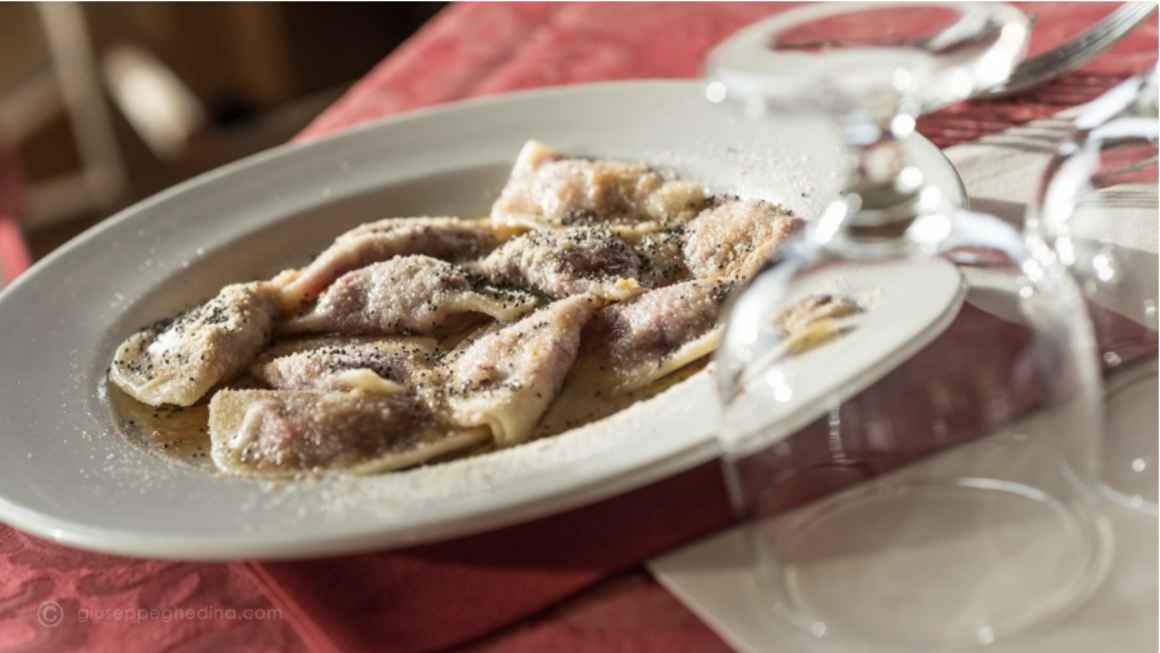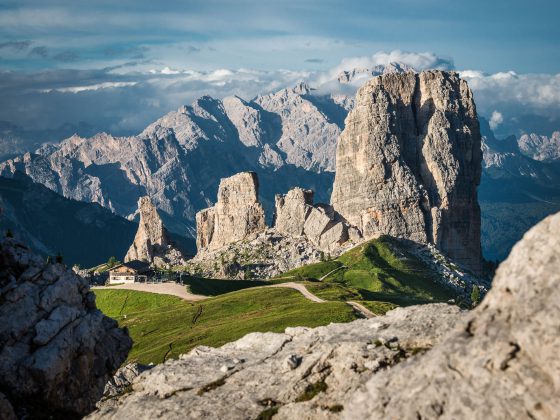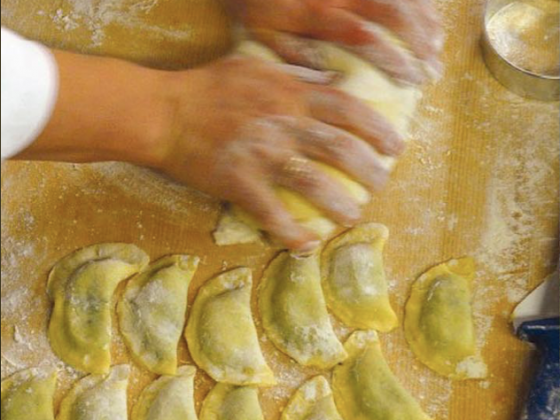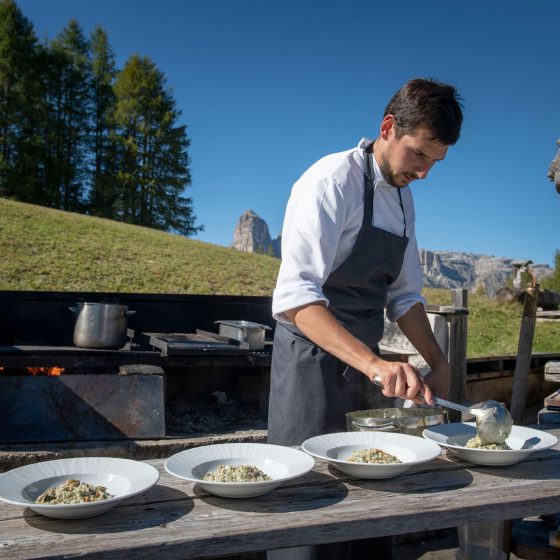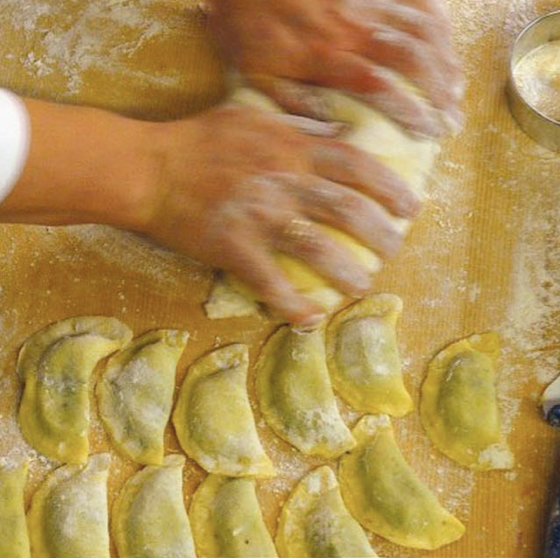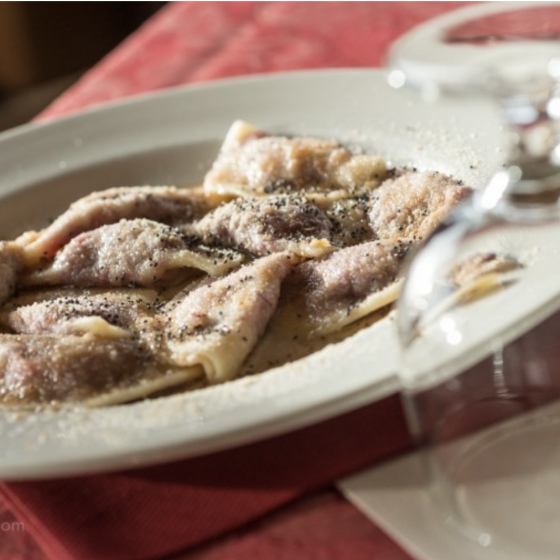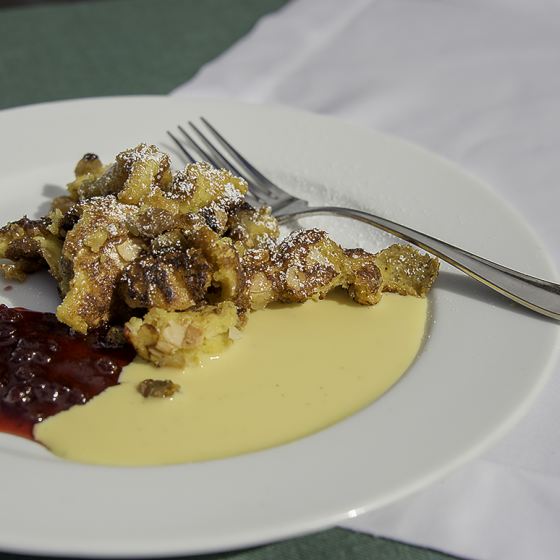Cajoncìe da Fighes – A Specialty of Val di Fassa Cuisine
Cajoncìe da Fighes (Casunziei of Figs), like the entire category of casunziei, has a variety of stories about of how it first came into being. In one such telling, Cajoncìe da Fighes is part of the traditional poor cooking of the Val di Fassa – even though figs were not a local product, because they were a dry food they were easily stored. Perhaps related, at the beginning of the 20th century the men of Val di Fassa would travel abroad to work as painters. When they returned home each year, they could only carry small things that were easy to transport and store: figs, for example. Regardless, Cajoncie da Fighes (Casunziei of Figs) may have richest history of any Ladin dish in this valley, and this fig-filled pillow pasta soon became a dish of the wealthiest families of the valley, served on important occasions including weddings.
This dish is a well-balanced pasta with a slightly sweet taste. While the figs are sweet, this classic recipe includes rye flour in the dough, resulting in a deliciously well integrated dish, that is excellent seasoned with melted butter and a sprinkling of Trentingrana (Grana Padano) cheese.
Recommended Serving Size
5 cajoncie per person
Preparation Time
1-1.5 hours
Ingredients
For the pasta:
1 cup (125 grams / 4.5 ounces) of flour 00
1 cup (125 grams / 4.5 ounces) of rye flour
Pinch of salt
2 eggs*
3/4 teaspoon of olive oil*
water
For the filling:
1 cup (125 grams / 4.5 ounces) of dried figs, chopped
1/4 cup (25 grams / 1 ounce) of white or rye bread, chopped
For serving:
Butter
Poppy seeds
Parmesan or Grana Padano cheese
Recommended Wine Paring:
An Aromatic Traminer or a German Riesling with residual sugar
* In the ancient versions of this recipe, the pasta was made using only water and flour, and a “poor pinch of salt.” Eggs and oil were an expensive luxury!
Preparation
Begin by making the pasta dough. Combine the two flours on a pastry board, forming a ring shape with a “well” or “bowl” in the center of the flour. In this “bowl,” add the eggs, and a pinch of salt. Working from the inside to the outside, knead the ingredients until the dough is uniform and compact, adding water as necessary. Cover the dough and let it rest for a couple of hours in a cool place. This allows the gluten in the dough to “relax,” which makes it easier to roll. Just as importantly, it lets the dough ferment and develop flavor!
While the dough rests, make the filling. Chop the dried figs and bread. Soften them, either by steaming them for a few minutes in an oven, or briefly soaking them. Mix together, using a pastry cutter or chopper tool.
Roll the pasta dough out into a thin sheet. Cut out 3-inch (~7-1/2-centimeter) diameter circles using a smooth, round biscuit or cookie cutter. Work the dough as quickly as possible so it does not dry out!
Spoon one teaspoon of the filling (about the size of a walnut) onto the center of each circle. Fold the filled dough circles in half, and close by pressing the edges together well. To finish, you can trim the edges with a notched wheel if desired.
(NOTE: You can store the cajoncie for up to 24 hours in the refrigerator, or you can prepare them up to a week ahead and freeze.)
When ready you are ready to cook the cajoncie, melt the butter in large sauté pan over medium heat, cooking until golden brown, but not burnt (it should smell and taste somewhat nutty). Stir in the poppy seeds and keep warm.
Bring well-salted water to a roiling boil, and add the cajoncie. When they float to the top (~3-4 minutes), drain them, and toss with the melted butter.
Sprinkle with grated Parmesan or Grana Padano cheese and serve.
This recipe adapted from several restaurants located in Canazei, Val di Fassa, including Ristorante El Pael, Hotel Andreas Ristorante, and Hotel Astoria Ristorante.

